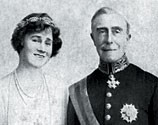Bledisloe Reception

Rau rangatira mā, nau mai, haere mai ki tēnei hui maumahara ki a Bledisloe, me te taonga tuku iho ki Aotearoa. Distinguished guests, ladies and gentlemen, warm greetings to you all as we gather to recognise the Bledisloe gift of the Treaty grounds to New Zealand.
I want to specifically acknowledge: Rt Hon John Key, Prime Minister and fellow Ministers of the Crown; David Shearer, Leader of the Opposition and fellow members of Parliament; Pita Paraone, Chair of the Waitangi National Trust Board; Chief Judge Wilson Isaac, Chair of the Waitangi Tribunal; Peter Marshall, Commissioner of Police; Rear Admiral Jack Steer, Chief of Navy; Your Worships Morris Cutforth and Wayne Brown, the Mayors of Whāngarei and the Far North respectively.
Let me start by thanking you all for accepting the invitation from Janine and me to attend this Bledisloe Reception. It is a great pleasure for us to welcome you to this reception on the eve of the 173rd anniversary of the signing of Te Tiriti o Waitangi.
This reception specifically marks the gifting of the Waitangi National Reserve to the nation by our predecessors, Lord Charles Bledisloe and Lady Elaine Bledisloe, in 1932. We also mark the 79th anniversary of the first Waitangi Day celebrations held here, on 6 February 1934, and recall that more than 10,000 people gathered to observe the occasion.
The Bledisloes’ gift of the Treaty House and the 506 hectares of land that surround it is one of the most significant philanthropic gestures in New Zealand’s history. The significance of their gift lies in setting the grounds—te whenua—and the Treaty that was signed here—its wairua, its spirit—as national taonga. Te Ara, the Dictionary of New Zealand, declares that the Bledisloes’ initiatives “marked the beginning of a process of rediscovery on the part of Pākehā and a broadening of awareness among Māori”. These things were, and remain, central pieces in New Zealand’s history, New Zealand’s heritage and New Zealand’s future.
Those beginnings set in train a journey that has seen us come to view Waitangi Day as our national day. They provide a framework for New Zealanders to look afresh at our history, to address its wounds and to look to the future. From a document that the courts once declared a “simple nullity,” the Treaty is now rightly recognised as a founding document of government in New Zealand.
The work of preserving the history and heritage of the grounds and its buildings was from the outset entrusted to the Waitangi National Trust Board. In the 81 years since it was established, the Board’s role has been transformed from a custodian of land and buildings, to the guardian of Te Pitowhenua—the birthplace of the nation. It plays a pivotal role in educating and informing New Zealanders about the role of the Treaty grounds in the Waitangi story and the on-going significance of the Treaty of Waitangi today in our sense of national identity and nationhood.
The connection I sense as Governor-General with Bledisloe and Waitangi is enduring. After all, it was another predecessor who signed the Treaty of Waitangi on behalf of Her Majesty Queen Victoria in 1840. While there are proposals to amend the law to make the Governor-General the Waitangi National Trust Board’s patron, I have agreed to a request from Chairman Pita Paraone to take on this role in anticipation of those changes.
I have agreed to do so because I want to cement the connection between the Office of Governor-General and Waitangi. And I want to use this opportunity to acknowledge and thank the board and its staff publicly for their service and care for these grounds, and for telling the Waitangi story to successive generations.
And I have also agreed to do so because it is an opportunity to lend my support to the Board’s exciting plans to further develop the grounds in anticipation of the 175th anniversary of the signing of the Treaty in 2015.
That anniversary, which is only two years away, is the same year that we will mark the centenary of the tragedy of the Gallipoli Landings. It will be an opportunity to reflect on all we New Zealanders have achieved together—Māori and Pākehā—since the signing of the Treaty. An enduring democracy, valiant and honourable service to defend our nation and a diverse society of innovative and tolerant people are but a few of the fruits of the seed planted at Waitangi in 1840.
In conclusion, we recognise again the contribution of Lord and Lady Bledisloe and thank them for their grand gift to us. Seventy-nine years ago today, Lord Bledisloe concluded a speech on the eve of the first Waitangi Day celebrations here, by saying he and Lady Elaine earnestly hoped that Waitangi would help perpetuate “peace and goodwill between both races and all classes based upon national unity.” We thank again the Waitangi National Trust Board for preserving and promoting their legacy in the years that have followed. Kia ora huihui tātou katoa.
